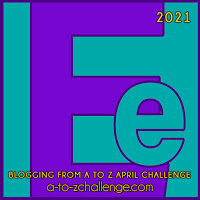“Show, don’t tell” is one of the most commonly-known bits of writing advice, for a reason.
There is little point to things known only to the author (or in my case, world builder or game master). If I create something only I ever see, it’s little more than an exercise in mental masturbation.
… better analogy than I thought, perhaps. If a person enjoys creating things, even if no one else sees the things, there’s nothing wrong with that. If someone doesn’t enjoy creating things other people won’t see, and does so anyway, that’s self-abuse and probably not much fun.
Right. Didn’t expect to go there, but there I went.
Show, Don’t Tell
Divine Trappings is all about ways to use domain associations to make the nature of a deity evident. Each domain has aspects that might apply to the deity.
- The way the deity manifests (appearance).
- The nature of the deity’s followers — heralds, allies, summoned, and even mortal.
- The direction to, beliefs of, and duties required of followers.
- The nature and qualities of places holy to the deity.
- Quests and trials important to the deity.
These various elements are examples, rather than mandatory, and pairs of them might well be contradictory.
That’s totally okay. They’re meant as examples and to prompt thought, and no deity is expected to have all elements of all domains. In fact, it is likely that any particular deity is likely to have only a small number of elements from each domain, and they likely interact to become something new.
Air Domain Aspect
I have started working on a draft Air domain aspect. It’s far from complete, but hopefully will illustrate some of what I’m talking about.
(I haven’t really had an opportunity to find a better way of handling the layout in a pretty manner, and the WordPress editor does not like me fiddling with HTML directly… I’ll come back to it at some point because I want the techniques for something else, but for now, lists are what we get.)
Air Domain Aspect Simple List
Here are some ‘simple list’ elements I described the other day, for the Air domain.
- Portfolios Sailing, sky, storms, weather, wind
- Motifs Clouds, fans, kites, stylized wind, windblown objects (often shown by effect, since air usually is not visible), birds and butterflies and other airborne creatures, lightning, wind instruments
- Manifestations Windswept hair, clothing ruffled by wind, windburned/chapped skin, whistles frequently, sounds of wind instruments, sings
- Colors White, cloudy greys (from white to near black), sky blue
- Holy Places Large and open and airy, constant or frequent breezes, wind chimes, censers with aromatic materials or incense, open to sky (no roof)
- Patronage Sailors, farmers (windmills), explorers, musicians, singers
I think it unlikely any air deity would use all of these. For each of the elements above, the choices are likely to be adjusted by, or replaced entirely by, elements from other domains. A deity who has the Air and Travel domains is likely to be patron of explorers and possibly sailors, more than farmers… but since musicians (bards) are often seen as itinerant, they might be counted among the deity’s followers.
A deity with the Air and Artifice domains, on the other hand, is likely to be more interested in capturing wind power. A deity with the Air and Death domains might manifest as a fierce, man-killing storm… or as silent, unseen vapors of poison gas (or of disease — ‘malaria’ was thought to be spread by bad air).
Air Domain Aspect Complex List
The ‘complex list’ elements are not as readily summarized. Or rather, they can summarized fairly easily, but benefit more from examples. To some extent they are the application of the simple elements.
- Allegiance Sailors, explorers, singers, musicians
- Bond Harnessing wind for work and for music
… actually, maybe I will summarize as above, but expand on them with examples in the body text below the summary. I begin to suspect my draft is just that, a draft, and that I’ll start seeing some patterns or templates to the duties and dogmas I can use.
‘Allegiance’ and ‘Bond’ are covenant terms, and if I can consistently apply them I think I won’t need many examples. Some, to illustrate what covenants are and what the terms mean, but “bring about a world in which wind is harnessed for work” says most of what I need to say. At least, when I’m formulating the dogmas, tenets, and duties.
“Bring about a world in which wind is harnessed for work”… if I choose this as one of the deity’s elements, I get to decide exactly what this means. Sails pushing a ship is harnessing the wind. Wind mills for grinding grain or pumping water count. Hang gliders and elvish storm kites for traveling… a bit of a historical stretch in comparison, but it seems a deity with Air and Travel domains would be in support.
Closing Comments
I had thought to finish off with some more example domain aspects, and how they could be combined to flesh out a deity. I see now that I really should finish the thoughts above. It seems my original plans might have been limiting how I can develop the aspects. Writing each out with lots of examples might, I think, look pretty monotonous. I might do better by explaining the elements better and what they mean, provide a smaller, more focused list of examples, then keep the domain aspects simpler.
Considering the number of domains and subdomains I have available, and remembering that those are not truly complete and only what I have so far, keeping the domain aspects to a more manageable size is probably a good idea.
Must be away to ponder a bit. This feels like it might be one of GreyKnight’s “Did everything work out as expected? No, and that’s awesome!” posts.

